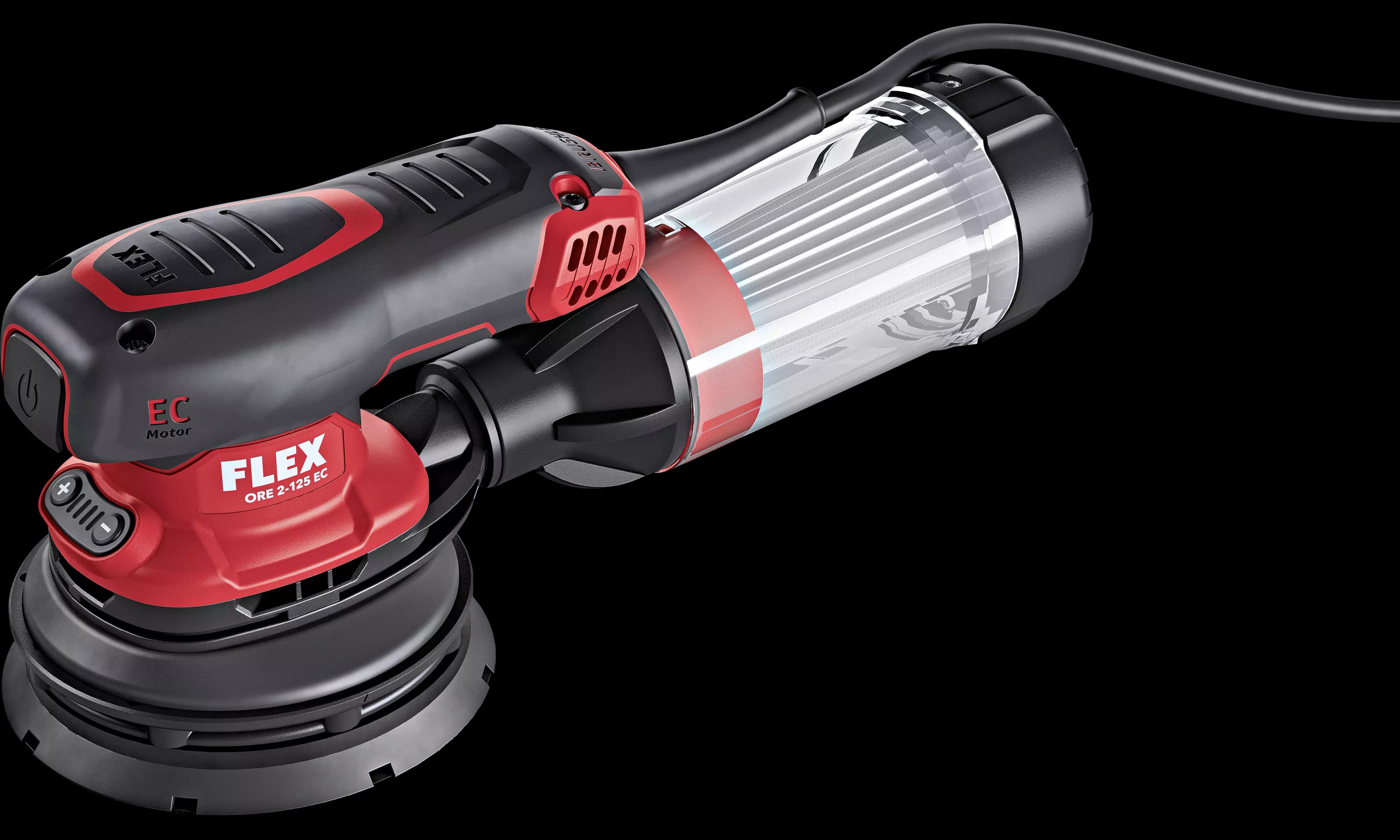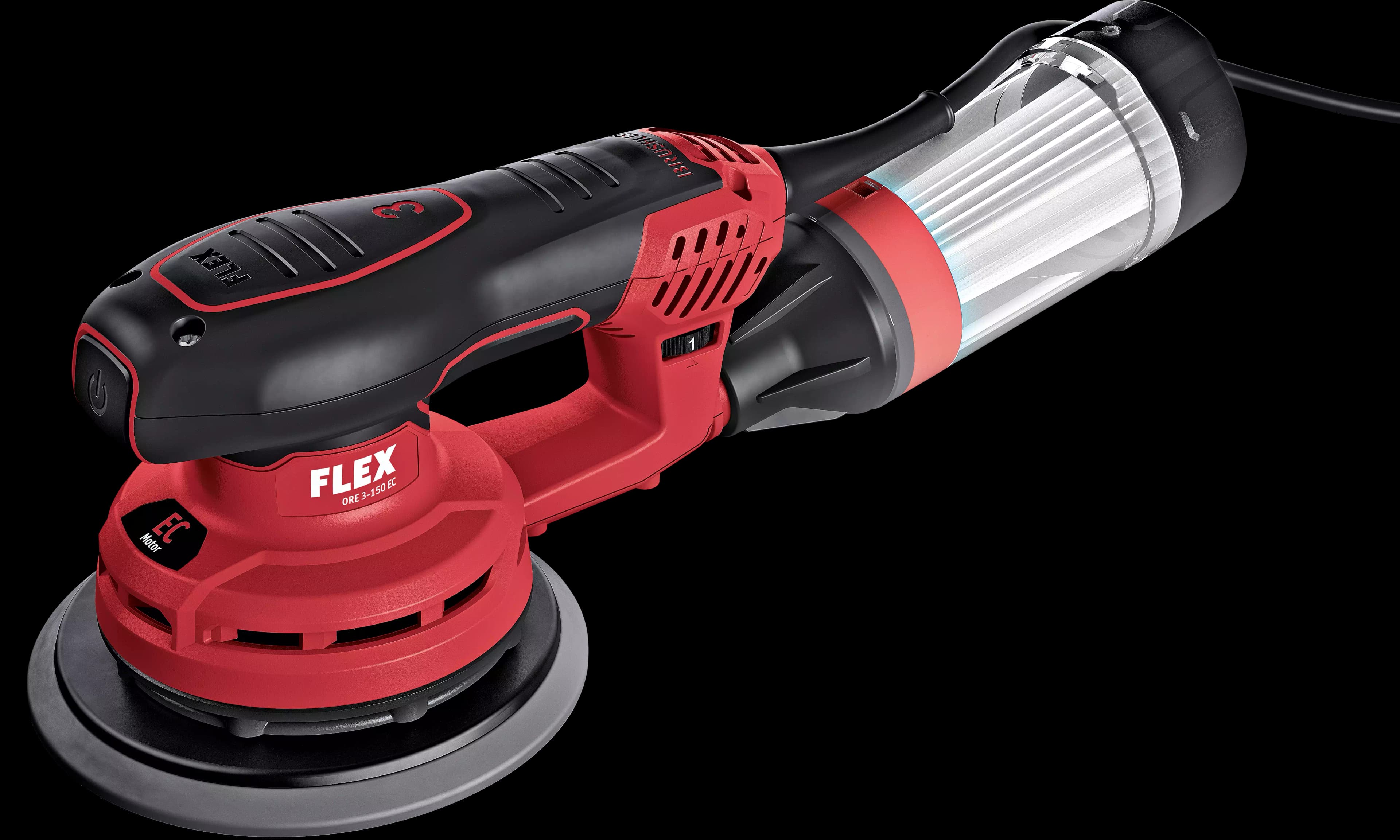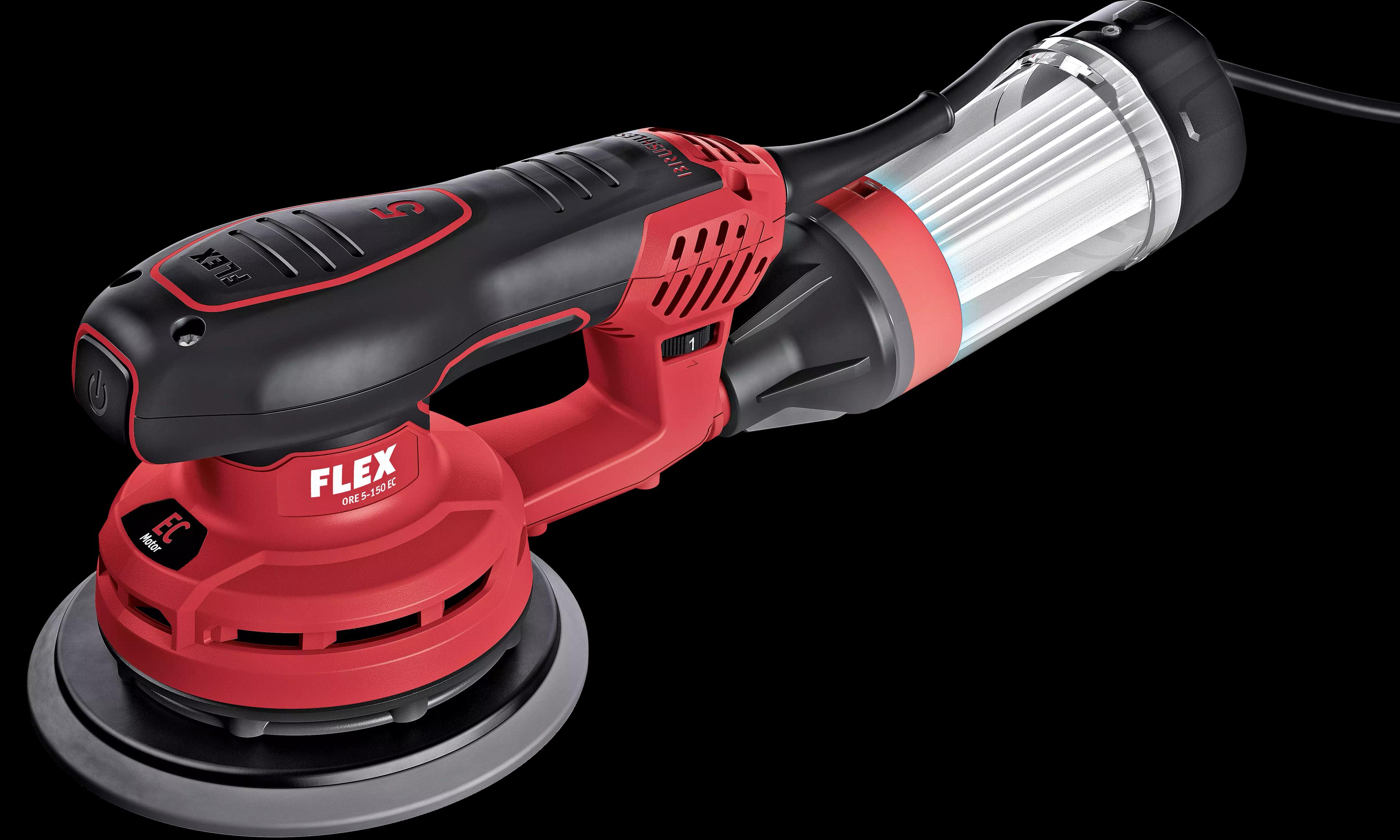Random-orbit sanders
Random-orbit sanders or cordless random-orbit sanders are manually operated, eccentrically driven sanding machines with a circular backing pad used for sanding a variety of materials. The difference between an orbital sander and a random-orbit sander is that the backing pad on an orbital sander is fixed and performs an orbital motion. On the random-orbit sander, the pad is mounted so that it's free-running, makes an orbital movement and is set in rotation by the centrifugal force. The random-orbit sander therefore performs a star-shaped, circular motion during sanding. As a result, it has a significantly higher removal rate and work progress is faster compared to the orbital sander.
Random-orbit sanders operate with even distribution on the workpiece surface. They also deliver a high surface quality, making them ideal for fine sanding and preventing grooves. Unlike rotary sanders, random-orbit sanders and orbital sanders are also suitable for working on uneven surfaces.
Backing pads for random-orbit sanders are available in a wide range of diameters. The most common backing pads are 125 or 150 mm in diameter. A backing pad 150 mm in diameter is suitable for particularly large and horizontal surfaces, while a backing pad 125 mm in diameter is more flexible and can also be used on vertical surfaces or overhead. Occasionally there are also larger backing pads, for example 180 mm or 225 mm in diameter. In addition to the diameter, backing pads also differ in their degrees of hardness. Soft pads are used for curved surfaces, while hard pads are used for straight surfaces. Pads of medium hardness can be used for both surfaces.The wattage indicates the power of the sander. As a rule, the power consumption of these units is 200 to 500 watts. Professional random-orbit sanders usually have a wattage of well over 500. The sandpaper also plays a role in the performance. This is attached to the backing pad by a hook-and-loop fastener.
The power of the units can also be identified by the no-load speed/no-load stroke rate of a random-orbit sander. The higher the no-load speed/no-load stroke rate, the faster the units turn and the finer the sanding pattern. There are models with a constant speed/stroke rate and also models with an adjustable speed/stroke rate range to respond to different materials. An important distinguishing feature of random-orbit sanders and orbital sanders is the eccentricity of the sanders, also called the oscillation circle. As a rule, the greater the eccentricity, the finer the cut.
What do you need to consider when using a random orbital sander?
For use at full speed, make sure that the random-orbit sander is placed straight onto the workpiece, otherwise unwanted indentations could result if the edge of the random-orbit sander eats into the surface. If the random-orbit sander doesn't have a disc brake, it should only be switched on when it is already resting on the workpiece. It is also important that the eccentric sander is always guided parallel to the surface, as the simultaneous oscillating and rotary movement causes very high abrasion at the edges of the sander. It is important that the contact pressure during grinding is not too high, otherwise the rotational movement of the pad is minimised or even stopped. It is also important to ensure good dust extraction, because abrasion during sanding creates dirt that may affect not just the machine but also your health. It also enables the best possible results to be achieved.
Possible uses for a random-orbit sander
With the right sandpaper, a random orbital sander can be used to sand a variety of materials. Traditionally, a sander is used by painters or in woodworking for such tasks as sanding paint, or in preparing or making furniture such as tables or sideboards. In these jobs the random-orbit sander is used to roughen the surfaces ready for subsequent painting or varnishing. The sander can be used to remove scratches, dents or water and grease stains from wood furniture. Care should be taken to sand the wood in several stages and with different grits so that an even surface abrasion is achieved. The grain should not be too fine so that the wood can absorb the varnish.
Another area of application is when working on plastics, paints and aluminium. For these jobs, the random-orbit sander is particularly suitable for the surface finish when it comes to painting. It is also used for sanding walls in the building carcass to prepare for filling. Here however, for the sake of convenience, only smaller areas should be sanded with a random-orbit sander to prepare for touching up.
Different types of random-orbit sanders
There are different types of random-orbit sanders. In the automotive sector, the most common types are pneumatic sanders. Electrically-powered drives are used in all other sectors.
Buying a random-orbit sander from FLEX
FLEX supplies a wide choice of random-orbit sanders at the best prices. Professionals turn to FLEX for the right random-orbit sander for their job.



